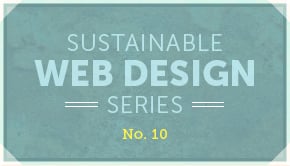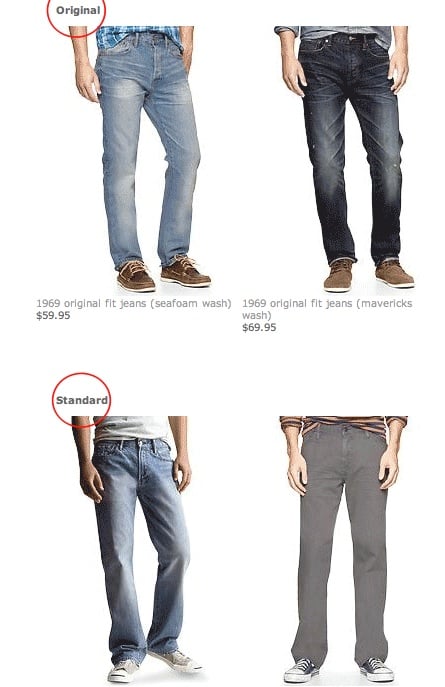Keyword Optimization for SEO and Sustainability

In this post, learn how keyword optimization can improve SEO, increase your content’s ‘findability’, and reduce energy use and digital emissions.
Keyword optimization is a well-known strategy for helping people find your content, both through search engines and for those searching within a website. But did you know that following good SEO practices also impacts website sustainability?
That’s because web servers, networks, and end user devices used to browse the internet all use electricity. Plus, every piece of hardware connected to the internet required vast quantities of physical resources to produce. This results in embedded emissions as well, not to mention extraction of rare earth minerals, water to keep servers cool, and so on.
Unfortunately, most of the internet’s electricity is still generated by sources that are not renewable or clean. Consider this:
- The more findable content is, the less irrelevant content a person needs to sift through to find what they need or get their questions answered.
- Fewer pages loaded means fewer server requests are made, and less data is transferred.
- In some cases, the customer may also end up spending less time on their device because they found what they needed quickly and without blockers.
All of this results in energy savings and reduced emissions in the internet ecosystem. When you consider that over 5 billion people use the internet, those savings add up. Though we don’t often think of it in these terms, keyword optimization is a component of sustainable web design.
Put another way, if you own a digital product or service, like a website, you are responsible for its impact, including Scope 3 emissions.
In this post, we take a detailed look at how to improve content findability through page-level keyword optimization, a popular SEO technique.
Keyword Optimization: Where to Place Focus Keywords
In order to optimize a page for a focus keyword or phrase, you need to place it in a number of different places on a page. With the exception of your homepage or landing pages where you may need to optimize for several keywords related to your products and service offerings, in general, you want to optimize a page for a single keyword or keyword phrase.
After you’ve selected a focus keyword for a page, here is where you need to place it:
In the Title Tag of Each Page
The first place that you want to put your focus keyword or keywords is in the title tag of each page.
Examples of an optimized title keywords for a homepage:
- Electronics, Cars, Fashion, Collectibles, Coupons and More Online Shopping | eBay
- Shoes, Clothing, and More | Zappos.com
- Shop clothes for women, men, maternity, baby, and kids | Gap
Examples of an optimized title keywords for a subpage:
- Electronics | eBay
- Popular Men’s Shoe Styles | Zappos.com
- Womens Clothes: jeans, tops, skirts, dresses, pants | Gap
Optimized title tag have certain characteristics:
- Avoid the use of duplicate title tags: Every page should have a unique title so that your pages are not competing with each other for relevance.
- Optimized titles should be 70 characters or less.
- Put company name at the end of your title tag to help build brand awareness.
- Use consistent punctuation across all page titles in between your keyword and company name.
- Balance keyword usage with usability, considering what language would be most compelling to the reader.
In the Description Tag of Each Page
The next place that you want to put your focus keyword(s) is in the description tag of each page. This is the brief description that shows up in search results, or when you share a page on Facebook or LinkedIn.
While this description should be written for humans and not for search engines, you should include your keyword at least once. Write your descriptions in plain English, using compelling language that would make a customer want to click on a link. Optimized page descriptions should be 150 characters or less. Longer descriptions will be truncated in Google with an ellipses (…).
In the Main Body of your Content
Depending on your article or post’s length, include your focus keyword at least 2-3 times in your article or post, including once in the first paragraph of the page.
In Headings and Subheadings Within an Article
Headings, which are often labeled “Heading 1, Heading 2, Heading 3”, etc. or “H1, H2, H3” in a content management system, help summarize a page’s contents. H
Headings should be written to both include focus keywords, and to summarize what comes next. This helps people, and spiders, scan a page quickly to see what’s most relevant to them. It’s also an accessibility best practice, because screen readers enable visually impaired people to jump from heading to heading so that they can quickly get to the section that’s most relevant to them.
When you think about it, the spiders that crawl websites also can’t see: they can’t see photos, multimedia content, or fancy font styles on a page. So it makes a lot of sense that SEO best practices are also often accessibility best practices.

Within Your Page URL
Another place that you should put your focus keyword is within the URL of your page, or the ‘slug’. Here’s an example from this post:

Sometimes it’s not practical to include your keyword in the URL of each page. That’s okay. Your URLs should be short, descriptive and human-friendly, helping the reader (and spider) accurately predict what’s on that page.
Also, use hyphens to separate words instead of underscores. Avoid special characters (such as smart quotes or ampersands), which can break URLs. For that reason, whenever possible, try to configure your content management system so that you can manually edit your URLs instead of having them generated automatically from the headline of the page.
Within Image Alt Tags
When writing an alt tag for an image, include a short sentence that describes the content. This is good for people with disabilities and for search crawlers. If it will readers better interpret your images, also consider including focus keywords in alt text. However, don’t undermine readability by keyword stuffing!
Note that when an image contains text, the alt tag should include a copy of that text so that visually impaired individuals and search crawlers can read the text. Include a target keyphrase as close to the beginning of your alt tag as possible.
Similarly, videos should also be labeled with appropriate meta information such as a clearly written title and description. If possible, for accessibility purposes, make sure the video also includes a transcript or closed-captioning.
Bonus: using keyword-optimized file names also helps with image search.
Keyword Optimization in Practice
I hope that this article has given you a practical understanding of how to prioritize and execute page-level keyword optimization. By following these best practices you will yield a number of benefits: driving traffic to your site, making your content more findable, improving accessibility and reducing your website’s carbon footprint.
Keyword optimization is just one component of a sustainable SEO strategy. Learn how to align your digital marketing strategy with an impactful climate strategy or design a more sustainable data strategy in other posts on this blog. Also, check out Ecograder for other tips on how to improve your website’s environmental impact.
Digital Carbon Ratings, now in Ecograder.
Understand how your website stacks up against industry carbon averages with this new feature.
Try Ecograder


